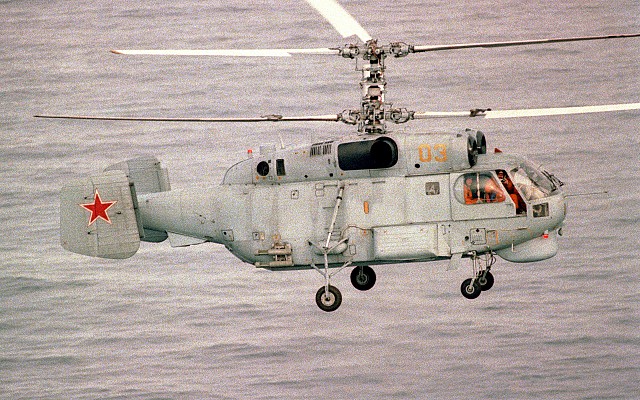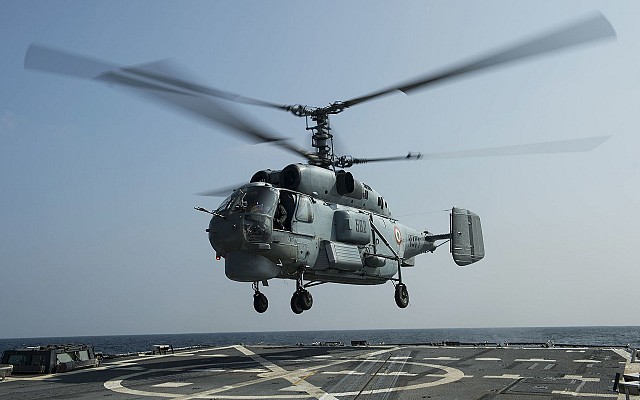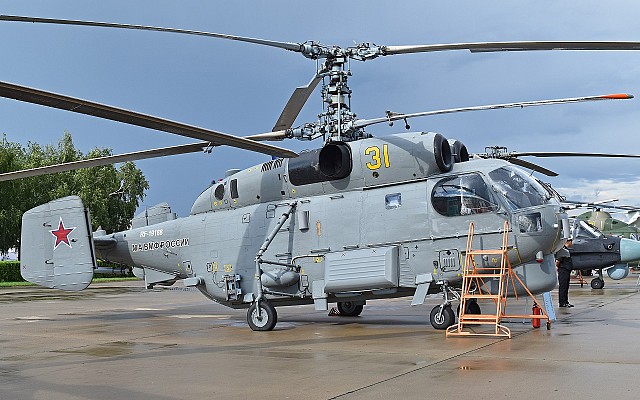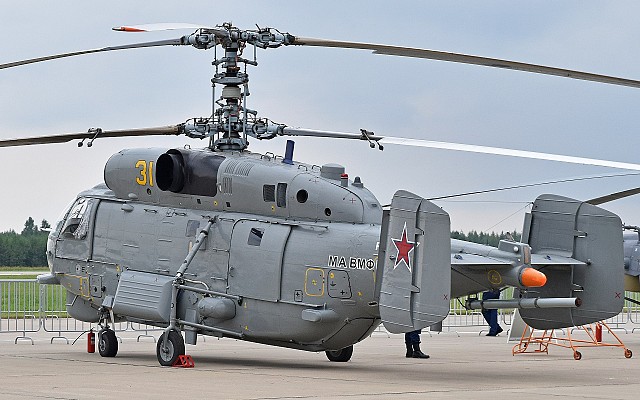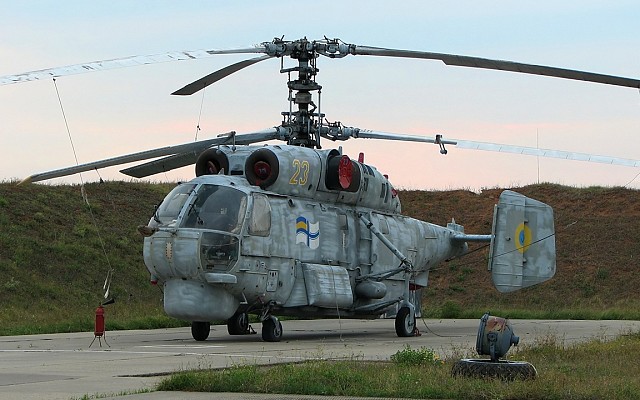Kamov Ka-27PL
Export: Ka-28 | NATO: Helix-A
Overview
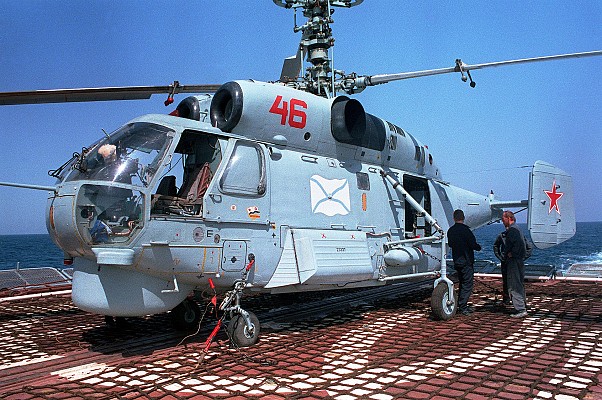
Ka-27PL
Russian navy Ka-27PL anti-submarine warfare helicopter parked on the helipad of the Russian guided missile destroyer Admiral Vinogradov.
Source: US Navy -
© Public domain
1978 - 1979 (state trials)
Over 40 Ka-28
Helix-A (NATO reporting name)
Izdeliye 500 (article index)
China
Ukraine
Vietnam
Description
Introduction
The Ka-27PL is a late Cold War era anti-submarine warfare helicopter of Soviet origin. It was developed as a more capable successor to the Ka-25PL. The Ka-27PL is most often used aboard ships, but can also operate from naval bases. The Ka-28 is an export model. The NATO reporting name is Helix-A. Other Helix designations apply to variants of the Ka-27 for search and rescue, utility, assault and electronic warfare roles.
Design
The Ka-27PL uses a rather uncommon twin contra-rotating main rotor design. For naval applications this has the added value of reducing the required main rotor radius and eliminating the need for a tail rotor. Compared to the earlier Ka-25 the fuselage is larger. Two Isotov turboshaft engines with over twice the power compared to earlier generation designs allow for increased weight, higher speeds and increased range and loitering time. For the anti-submarine warfare role the Ka-27PL is equipped with a suite of sensors, sonobueys and navigation and communication equipment. As a result there is practically no space for passengers or internal cargo. Armament can be directly attached to the rear fuselage.
Sensors
For the anti-submarine warfare role the Ka-27PL is fitted with a vast array of sensors. The three main sensors are the dipping sonar, magnetic anomaly detector and sonobuoys and associated communications link. Furthermore there are signals processing systems, communications equipment, radio direction finder and navigation systems.
Firepower
The Ka-27PL can carry a single lightweight torpedo. These include the AT-1M, VTT-1, AT-3 Orlan (UMGT-1) and APR-2 Yastreb. Other options include up to eight PLAB-250-120 or twelve PLAB-10K depth charges. In addition to the weapons carried the Ka-27PL can relay the target's location to friendly naval vessels and maritime patrol aircraft. Soviet destroyers often carry an array of anti-submarine warfare systems, including longer range missiles with a torpedo payload.
Mobility
The two Isotov turboshaft engines have a 2.200 hp take-off power rating, with 1.500 hp used at cruise speed. This allows for a ferry range of nearly 1.000 km. A typical combat radius is 200 km with nearly one and a half hour loitering time.
Users
The Ka-27PL was acquired in quantity by the Soviet navy. It became the main shipborne anti-submarine helicopter and remains so in the Russian navy to this day. Dozens of Ka-28 have been exported, with the most notable users being China, India and Vietnam. The Ka-27PL is no longer in production. Small quantities are undergoing modernization upon refit to Ka-27M standard.
Variants
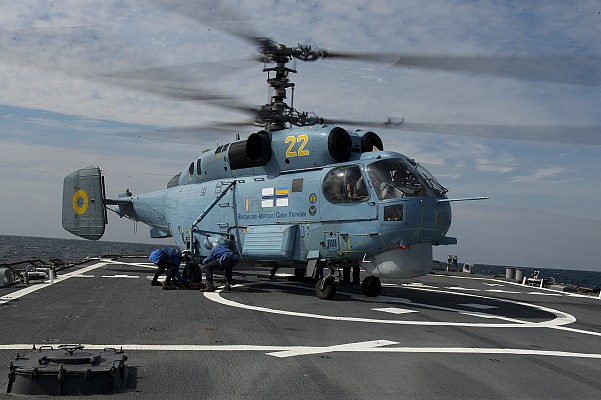
Ka-27PL
Initial production variant of the anti-submarine warfare variant of the Ka-27 helicopter. This is the most common variant of the anti-submarine variant of the Ka-27, since the Soviet Union was the major power adopting the Ka-27.
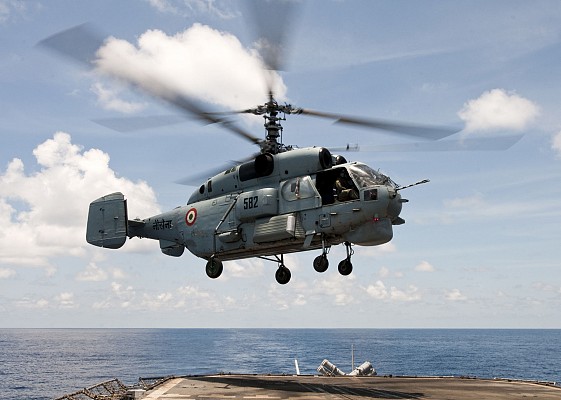
Ka-28
Export model of the Ka-27PL with simplified equipment set for export to foreign nations. Dozens have been produced for export sales. A small number was even acquired by Russian naval aviation to augment the number of Ka-27PL.
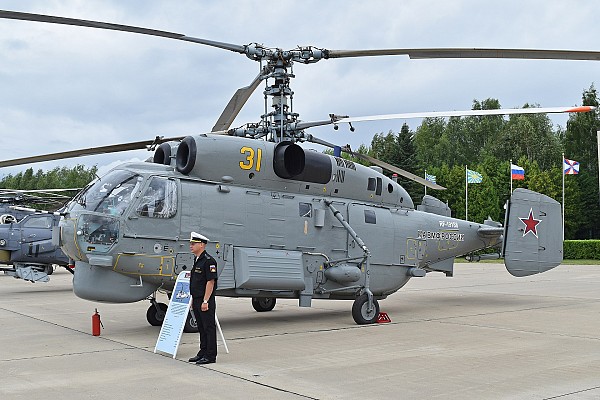
Ka-27M
Modernized version of Ka-27PL. Development started in 1998 and by 2008 the second prototype was developed. First tested by the Russian navy in 2015. Ka-27M is converted from existing Ka-27PL during maintenance. Includes new radar, new acoustic and magnetic sensors, digital information processing and a radio reconnaissance system.
Details
Media
Related articles

Kamov Ka-25
The Ka-27PL was developed as a more capable successor to the Ka-25BSh anti-submarine warfare helicopter.
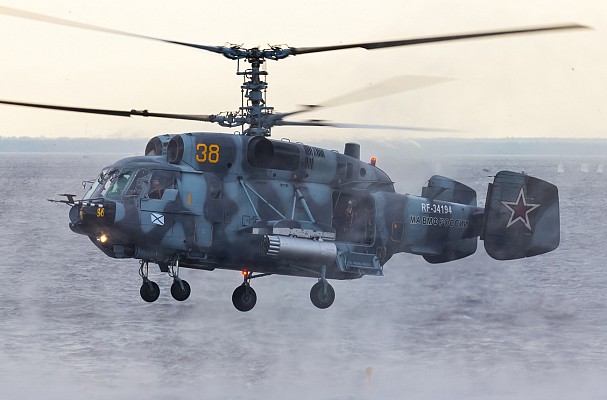
Kamov Ka-29TB
The Ka-29TB is an assault transport helicopter derived from the Ka-27. It has a wider fuselage and can carry an array of guided and unguided munitions.
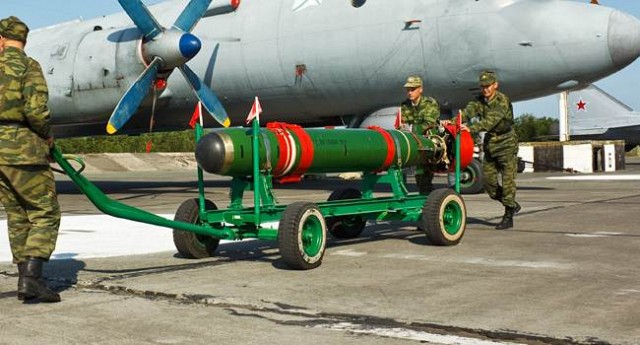
UMGT-1
The AT-3 Orlan is one of the main types of lightweight torpedo used on the Ka-27PL.
